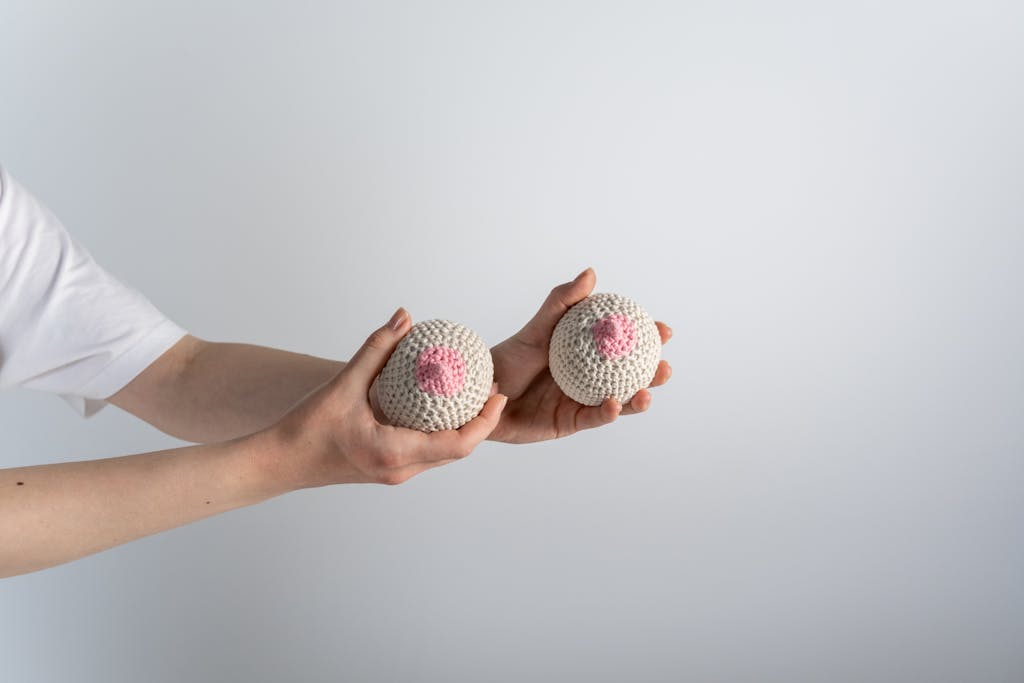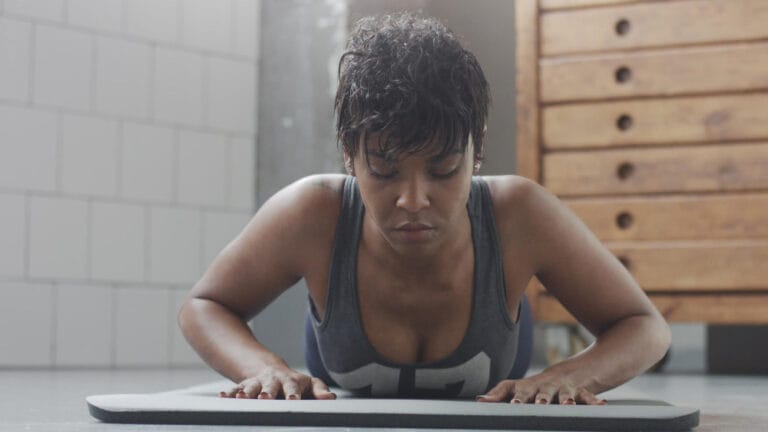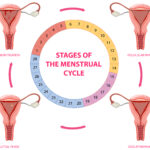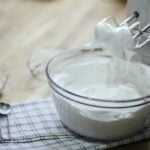FREE SHIPPING OVER $50
Why Your Breasts Shrink Faster During Weight Loss: How to Fix It
Weight loss is a journey, one that can be filled with a mix of excitement, determination, and sometimes frustration. One common complaint I hear, especially from women, is that their breasts seem to shrink faster than their thighs or other parts of their bodies when they start losing weight. It’s a frustrating experience, especially when your goal is to tone up your entire body rather than lose your curves in certain areas. In this article, I’ll dive into the reasons behind this phenomenon and what you can do about it. But before we get started, let me be upfront: I don’t personally believe in targeted weight loss. It’s inefficient and often leads to disappointment. But don’t worry, I’ll explain why.
The Myth of Targeted Weight Loss

Let’s start with one of the biggest misconceptions in fitness: the idea that you can lose fat from specific areas of your body by focusing on exercises for those areas. This concept, often called “spot reduction,” is a persistent myth that has been debunked by science time and again. The truth is, when you lose weight, your body decides where the fat comes off, and unfortunately, you have very little control over this.
Why Targeted Weight Loss Doesn’t Work
Your body stores fat in various places, and when it starts to burn fat for energy, it doesn’t pull it from the area you’re exercising. For instance, doing hundreds of crunches won’t specifically burn belly fat, just as endless leg lifts won’t solely target thigh fat. Fat loss is a whole-body process driven by a calorie deficit, meaning you burn more calories than you consume. When your body is in a calorie deficit, it uses stored fat for energy, and this fat can come from anywhere in your body.
While it would be nice to selectively choose where we lose fat, our genetics largely determine where our bodies store fat and how it gets metabolized during weight loss. For many women, this means losing fat from their breasts more quickly than from their thighs or hips.
Understanding Breast Composition
To understand why your breasts may shrink faster than your thighs during weight loss, it’s important to know what your breasts are made of. Breasts are composed of glandular tissue, connective tissue, and fat. The amount of fat in your breasts varies from person to person, but it’s this fatty tissue that gives breasts their size and shape.
Why Do Breasts Shrink During Weight Loss?
Since breasts contain a significant amount of fat, they are one of the first areas where you might notice a reduction in size when you start losing weight. This is simply because the fat in your breasts is being burned for energy as your body loses overall fat. On the other hand, areas like the thighs or hips, which often have a denser fat composition and different types of fat cells (like subcutaneous fat), might take longer to shrink.
In essence, your body doesn’t prioritize which fat stores to burn; it just happens that the fat in your breasts is more readily available to be used as energy compared to other areas.
The Role of Hormones
Hormones also play a significant role in how your body stores and loses fat. Estrogen, a key hormone in women, tends to promote fat storage in areas like the hips, thighs, and buttocks, while testosterone (which women also have in smaller amounts) can influence fat storage in other areas, including the upper body.
When you lose weight, especially if you’re doing so through intense exercise or a strict diet, it can cause hormonal shifts that may affect where you lose fat first. For some women, these hormonal changes might lead to more significant fat loss in the breasts before other areas start to shrink.
How to Prevent Breast Shrinkage During Weight Loss
While you can’t completely prevent breast shrinkage during weight loss, there are strategies you can employ to help maintain your curves and minimize fat loss from your breasts.
1. Focus on Muscle Building
One way to preserve the appearance of your breasts during weight loss is to build muscle in the chest area. While you can’t add fat back to your breasts, you can develop the pectoral muscles underneath. This can help give your breasts a lifted, fuller appearance, even if they’ve reduced in size. Exercises like push-ups, chest presses, and dumbbell flyes can help strengthen your chest muscles.
2. Don’t Overdo Cardio
Cardiovascular exercise is an essential part of any weight loss plan, but too much cardio can lead to muscle loss, including the muscles that support your breasts. Instead of focusing solely on cardio, incorporate strength training into your routine. This approach not only helps maintain muscle mass but also boosts your metabolism, which can aid in more balanced fat loss.
3. Eat a Balanced Diet
Your diet plays a crucial role in how your body loses fat. Consuming a balanced diet rich in healthy fats, protein, and complex carbohydrates can help preserve muscle mass and provide the nutrients your body needs to support overall health, including the health of your skin and underlying tissues. Healthy fats, like those found in avocados, nuts, and olive oil, are particularly beneficial because they support hormone production and skin elasticity.
4. Maintain a Healthy Weight Loss Pace
Rapid weight loss often leads to more muscle and fat loss, including from the breasts. Aim for a slow and steady weight loss of 1-2 pounds per week. This pace is more sustainable and can help you retain more muscle mass while losing fat, potentially preserving more breast tissue in the process.
5. Consider Collagen Supplements
Collagen is a protein that plays a crucial role in maintaining the structure and elasticity of your skin, including the skin around your breasts. As you lose weight, your skin may lose some of its elasticity, which can lead to sagging. Taking collagen supplements may help support your skin’s elasticity, potentially reducing the appearance of sagging and helping to maintain the overall appearance of your breasts during weight loss.
Collagen can be found in foods like bone broth or taken as a supplement in powder or capsule form. Some studies suggest that collagen supplements may help improve skin elasticity and hydration, which could be beneficial if you’re concerned about sagging skin as you lose weight.
Accepting the Changes
While it’s natural to feel disappointed when you notice your breasts shrinking more quickly than other parts of your body, it’s important to remember that weight loss is about more than just aesthetics. It’s about improving your overall health, increasing your energy levels, and feeling better in your own skin.
It’s also worth noting that your body will continue to change throughout your weight loss journey. You might find that after an initial period of breast shrinkage, your weight loss begins to even out, and other areas start to slim down as well.
If maintaining breast size is a significant concern for you, consider focusing on body recomposition rather than just weight loss. Body recomposition involves losing fat while building muscle, which can help you achieve a leaner, more toned physique without significant reductions in breast size.
The Importance of Self-Care During Weight Loss
As you work towards your weight loss goals, don’t forget to practice self-care. Weight loss can be physically and emotionally demanding, so it’s crucial to take care of your mental and physical well-being. Make sure you’re getting enough sleep, managing stress, and engaging in activities that make you feel good about yourself.
Self-care also means being kind to yourself during this journey. Your body is going through changes, and it’s normal to have mixed feelings about those changes. Remember that your worth isn’t defined by your breast size, thigh circumference, or any other physical measurement. What matters most is how you feel about yourself and your health.
Conclusion
Weight loss can be a complex and often frustrating process, especially when your body doesn’t seem to respond in the way you’d like it to. While you can’t control where your body loses fat, you can take steps to support a more balanced and sustainable approach to weight loss. By focusing on strength training, eating a balanced diet, considering collagen supplements, and practicing self-care, you can help preserve your curves while working towards a healthier, fitter version of yourself.
Related Articles
If you found this blog post insightful, explore more meal plans by delving into our related articles:







